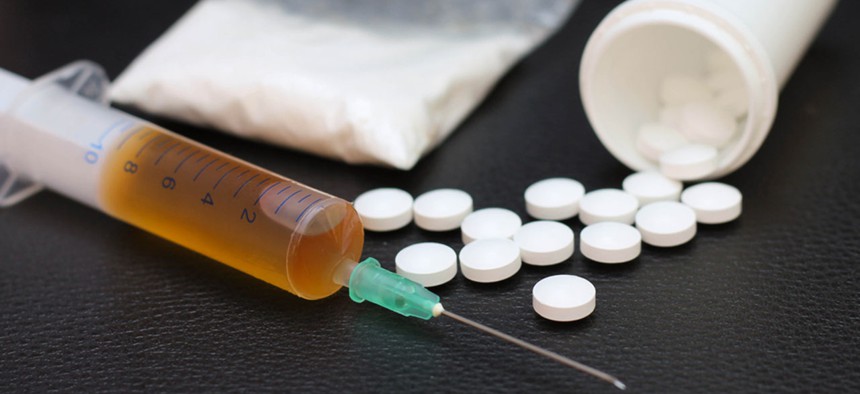
Mukhina Viktoriia/Shutterstock.com
HHS Unveils New Rules for Doctors Treating Opiate Drug Abuse
Coupling medicine with counseling and behavioral therapy is a comprehensive path to recovery, according to HHS.
With the U.S. in the thick of what’s been called a prescription-painkiller epidemic, the Health and Human Services Department announced plans to change a rule restricting doctors from prescribing medication to treat opioid abuse.
Coupling medicine with counseling and behavioral therapy is a comprehensive path to recovery, according to HHS, but of the 2.5 million people who need treatment for an opioid use disorder, less than 1 million people are receiving it. The Thursday announcement—aimed at increasing access to treatment—focuses on a regulation limiting the number of prescriptions doctors can write for buprenorphine, a medicine used to combat painkiller and heroin dependence.
The current rule: Physicians certified to prescribe the medication, at first, can only do so for 30 patients. After a year, they can be allowed to write prescriptions for up to 100 patients. The department announced this would change, but fell short of saying exactly what the new regulation would be.
“This epidemic is multifaceted, and we need to respond with the best solutions that medicine and behavioral therapy can provide together,” HHS Secretary Sylvia Burwell said Thursday at a two-day, 50-state meeting aimed at finding solutions to the rise in opioid use. “So we need to increase the use of buprenorphine, which can help us treat opioid use disorder when combined with psycho-social support.”
Additionally, the department’s Office of Rural Health Policy will dole out about $1.8 million in grants to community partners in 13 states. This comes on the heels of a White House announcement last week that the administration is using $500 million authorized by the Affordable Care Act in part to give community health centers more resources to treat patients with alcohol and drug addiction.
That’s because prescription drugs and their cheaper alternative—heroin—have hit communities hard in recent years. From 2002 to 2013, the number of heroin-related deaths nearly quadrupled to 8,200, according to the Centers for Disease Control and Prevention. And from 1999 to 2013, painkiller-related deaths nearly quadrupled to 16,000, the CDC reports.
Capitol Hill, the White House, and presidential candidates are taking notice. In May, Sens. Rand Paul and Edward Markey introduced a bill that would, like the administration’s Thursday announcement, increase access to buprenorphine. In August, the administration announced it would funnel $5 million into reducing the trafficking, distribution, and use of heroin. This month, Democratic front-runner Hillary Clinton unveiled a $10 billion plan to treat drug and alcohol addiction and focus on treatment rather than jail time.
During Burwell’s announcement to expand access to medication-assisted treatment, she invoked the story of a young woman from Denver, named Blair Hubbard. Hubbard was a “good kid,” Burwell said, who became addicted to painkillers after her wisdom teeth were removed and then turned to heroin. After a near death experience, Hubbard got help—and it was a combination of medication and therapy that helped kick-start her sobriety.
“The solution to this problem is not going to be easy, but Blair’s fight wasn’t easy either,” Burwell said. “For her and for all of our neighbors up against opioid abuse, we have to fight just as hard. Good intentions are not enough. We must act today.”
(Image via Mukhina Viktoriia/Shutterstock.com)







